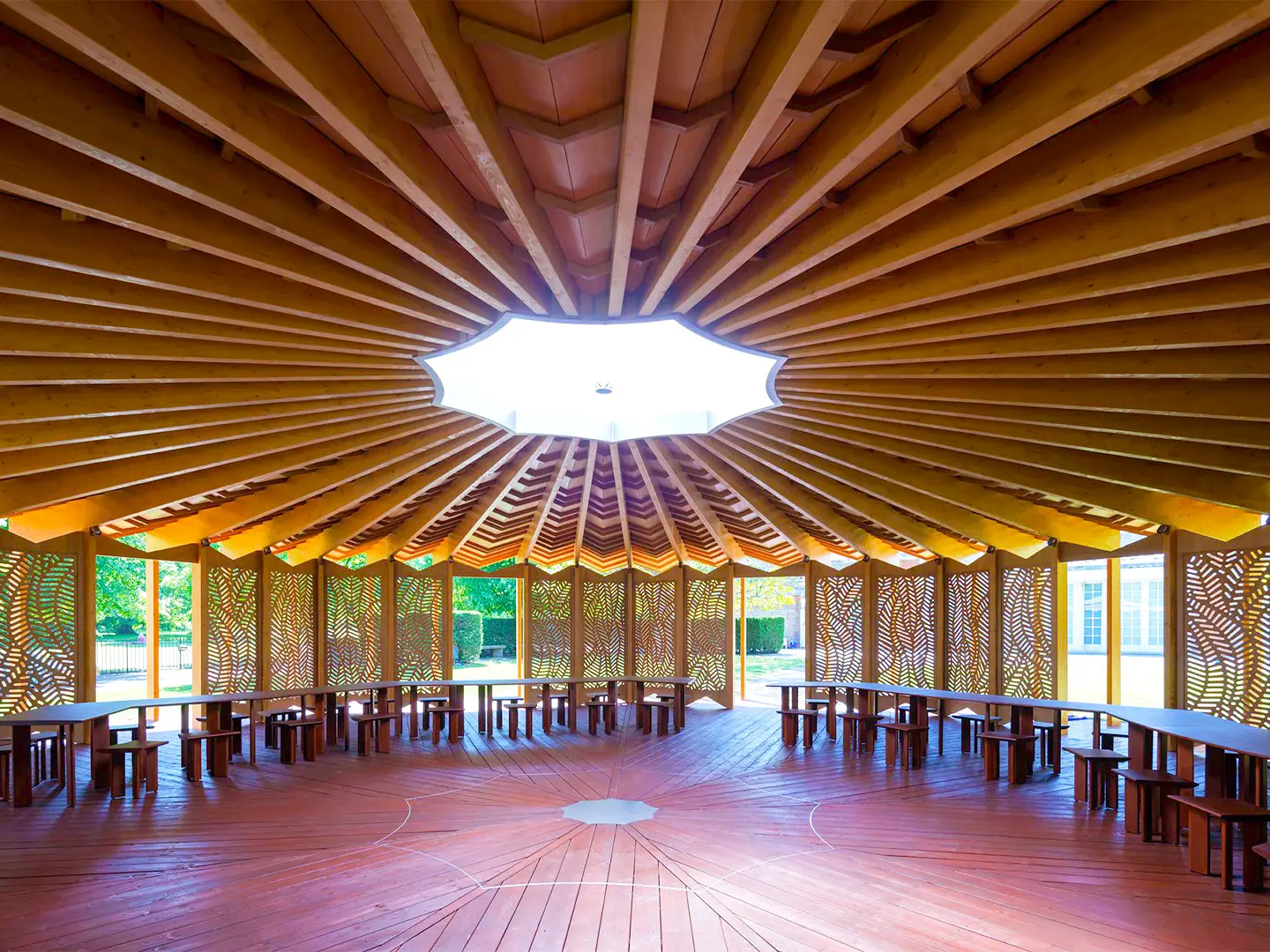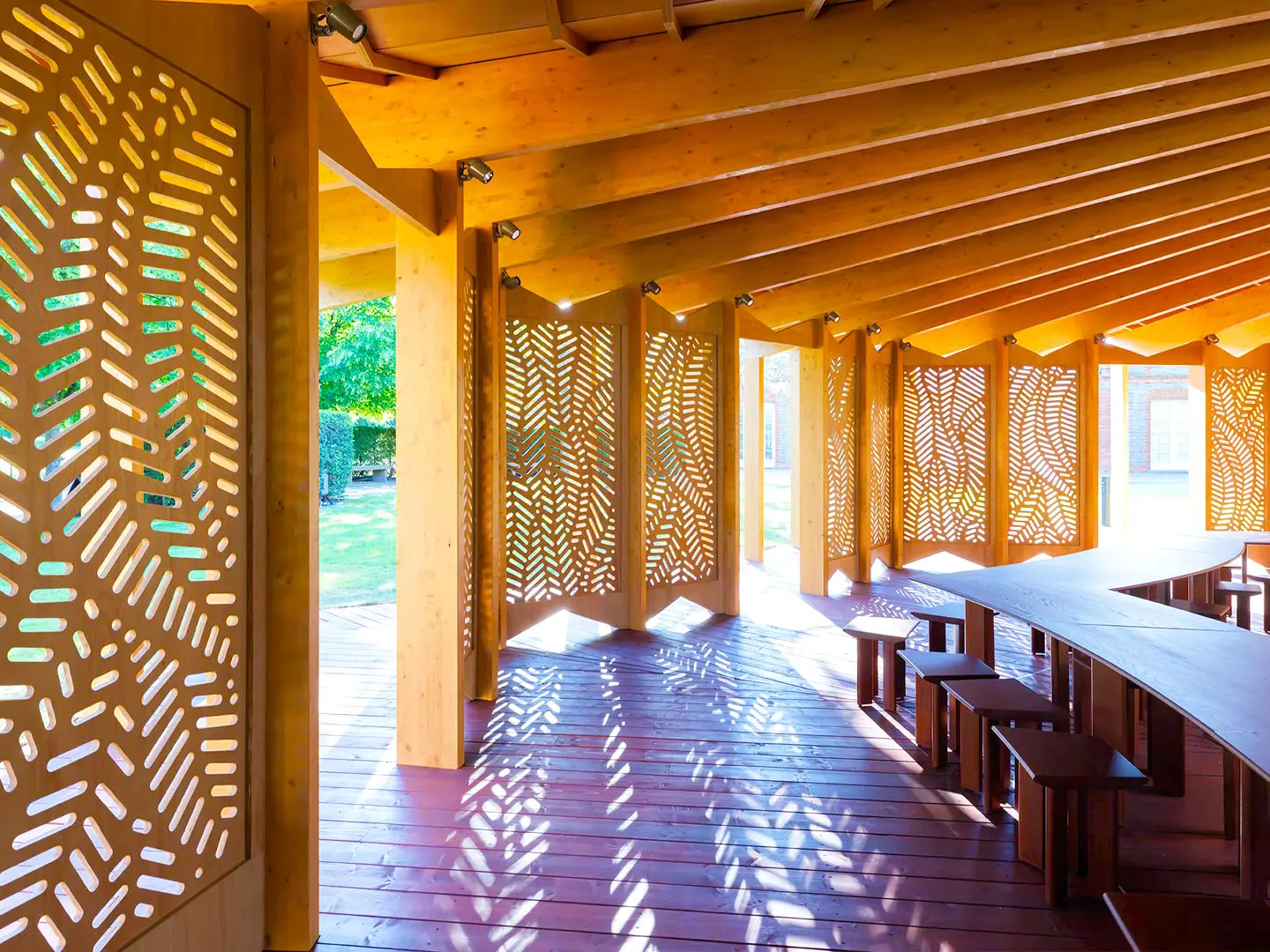From the Tokyo Design Awards, to the NY Product Design Awards & Architectural Design Awards, Best in Design, the NEB Trophy Design Competition, the Good Design Awards® and the Africa International Design Awards (AIDA), all the international news not to be missed in 2026
“À table”: the new Serpentine Pavilion by Lina Ghotmeh

Serpentine Pavilion 2023 designed by Lina Ghotmeh. © Lina Ghotmeh — Architecture. Photo Iwan Baan, Courtesy Serpentine
From sustainability to the “Archaeology of the Future”: Lina Ghotmeh’s point of view
“À table” is the title of the Serpentine Gallery’s new pavilion, designed by the Lebanese-Parisian architect Lina Ghotmeh. Embodying the concept of sustainability and reusability of the structure, it is financed by Goldman Sachs for the ninth consecutive year. The architect shared her views on the significance and construction of this important project.
“À table is an invitation to dwell together in the same space and around the same table. An encouragement to engage in a dialogue and think about ways to re-establish our relationship with nature and the Earth. A celebratory space, a modest structure inserted in an atmosphere reminiscent of the Toguna huts of the Dogon people in Mali, West Africa, designed to bring together all the members of a community for a discussion. An opportunity to reflect on how we could live more sustainably.”

Lina Ghotmeh, photo Gilbert Hage
With the focus on nature, the all-timber Pavilion is a tribute to Kensington Gardens, being made with low-carbon biological materials in line with the Serpentine's policy of reducing the environmental impact. Ghotmeh stressed the importance of understanding the materials used and the resources available, set in the perspective of a wholly original design concept: “In designing the pavilion I was inspired by the natural setting. Its structure looks like a skeleton; the wooden ribs, sustainably sourced, are arranged to support a suspended pleated roof. By echoing the structures of tree leaves, the Pavilion embraces the nature of the park in which it stands out, reminding us of the many lives that bloom under our feet. The concave lines of its perimeter are drawn according to the shapes of the trunks and crowns of the adjacent trees. Building with wood means building a structure while thinking about the design phase, but also about dismantling and reusing it.”

Serpentine Pavilion 2023 designed by Lina Ghotmeh. © Lina Ghotmeh — Architecture. Photo Iwan Baan, Courtesy Serpentine
At her Paris-based practice Lina Ghotmeh-Architecture, she develops projects that are fusions of architecture, art and design on a global scale. Her innovative work reveals a transversal and multidisciplinary approach to architecture for a sustainable future through a historical research process called “Archaeology of the Future”. In stating her views about this concept, Lina Ghotmeh observed that: “It is a work ethic, a method of design development that draws parallels between archaeology as a process and architectural design. I see archaeology as a form of research, a process close to the earth that embraces the traces of the past of our civilizations. An archaeologist is constantly looking for clues, narratives of our history and culture. I see architecture as in a way equivalent to archaeology, inseparable from its environment. In my practice as an architect, I dig to design and learn from the footprints of the past by listening to the voices of my ancestors as well as those of our present world.”
Over the years the new Serpentine Pavilion has evolved as a public, artistic and participatory platform for the Gallery's innovative, experimental and community programs. Throughout the summer it will become a platform for the program that will present Park Nights, an interdisciplinary venue for live meetings of music, poetry, and dance, to be held parallel with the Serpentine’s educational activities. Selected by the European Architects Review as one of the 10 “Visionary Architects for a New Decade”, Lina Ghotmeh has won many awards, including the Cardin Prize of the French Academy of Fine Arts in 2019, the Tamayouz Excellence Award “Woman of Outstanding Achievement” in 2020, and the prestigious Architecture Prize of the Schelling Foundation in 2021.
Finally, commenting on her future projects, Ghotmeh concludes by mentioning her latest challenge: “I have just completed the new Hermès production facility in Normandy, a first low-carbon building in France. It is a highly ecological project through which I wanted ecology to be paired with beauty and poetry. In this way architecture always offers an opportunity to push the boundaries.”

Serpentine Pavilion 2023 designed by Lina Ghotmeh. © Lina Ghotmeh — Architecture. Photo Iwan Baan, Courtesy Serpentine


 Stories
Stories








